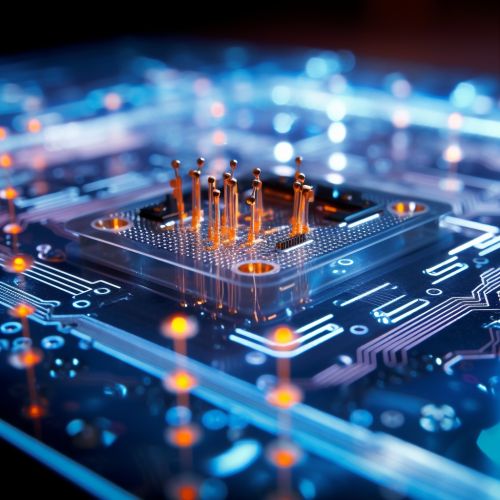Lab-on-a-chip
Introduction
Lab-on-a-chip (LOC) is a term for devices that integrate multiple laboratory functions on a single chip of only millimeters to a few square centimeters in size. LOCs deal with the handling of extremely small fluid volumes down to less than pico-liters. These devices are a subset of MEMS devices and often indicated by "Micro Total Analysis Systems" (µTAS) as well as "Microsystems for Chemical and Biological Analysis".


History
The concept of LOC started to take form in the mid-1990s due to the advent of microfabrication technology borrowed from the semiconductor industry. The idea of incorporating laboratory capabilities into a chip format has its roots in the miniaturization trend incited by the microprocessor market.
Design and Fabrication
LOC devices are a product of the field of Microfluidics. Microfluidics is the science which deals with the behavior, precise control, and manipulation of fluids that are geometrically constrained to a small scale (typically sub-millimeter) at which capillary penetration governs mass transport. It is a multidisciplinary field intersecting engineering, physics, chemistry, microtechnology and biotechnology.
Applications
LOCs have a wide array of applications in various fields. These include medical diagnostics, especially Point-of-Care testing, as well as protein crystallization, cell sorting, genetic analysis, and microscale chemical synthesis.
Advantages and Challenges
LOCs offer a number of advantages over traditional laboratory setups. These include reduced fluid volumes, which reduces reagent costs and improves process efficiency; reduced physical footprint, enabling portability; and increased control over the experimental environment. However, there are also a number of challenges associated with LOCs, including difficulties in device fabrication and the need for specialized equipment and training.
Future Directions
The future of LOCs is promising, with ongoing research focusing on improving device functionality, reliability, and accessibility. This includes the development of new fabrication techniques, the integration of LOCs with other technologies such as nanotechnology, and the creation of new applications in fields such as environmental monitoring and food safety.
